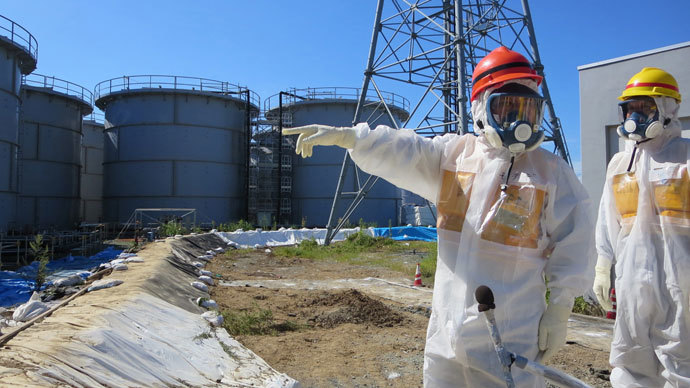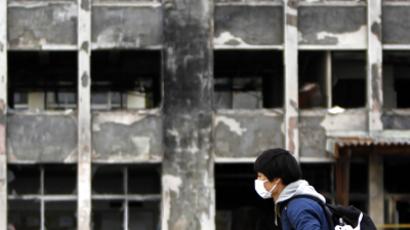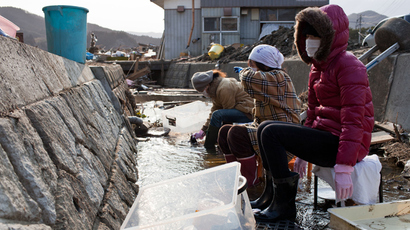Fukushima radiation levels hit 2-year high

Seawater just outside one of Japan’s damaged Fukushima Daiichi reactors registered radiation levels on Wednesday 13 times the previous day’s reading, the operator of the crippled nuclear plant said on Thursday.
Japan’s Tokyo Electric Power Company (TEPCO), said combined Cesium-134 and Cesium-137 readings just outside the damaged No. 2 reactor jumped to 1,200 becquerels per liter on Wednesday, the highest levels recorded since late 2011.
Regulatory limits for Cesium, which emits powerful gamma radiation and is potentially fatal to humans, is 90 bq/liter for Cesium-137 and 60 bq/liter for Cesium-134.
A TEPCO spokesman said the sudden spike in radiation was caused by construction work near the No. 2 building, Reuters reported.
News of the spike in radiation levels is the latest setback this week for TEPCO, which has been harshly criticized for its handling of the nuclear disaster in the wake of the massive quake and tsunami that hit the power station in March 2011, triggering three reactor meltdowns.
On Wednesday, six workers were exposed to radiation after a pipe connected to a contaminated water treatment system was mistakenly detached. Reuters estimates that at least 7 tons of water escaped the system.
Earlier, a worker accidentally switched off a water pump used to channel water into the reactor building.
Crews are using chemicals to fortify the soil around the Fukushima reactor buildings - hundreds of meters from the port entrance that connects to the Pacific Ocean - to prevent contaminated water from flowing into the ocean. The pressure from injecting chemicals into the ground forced contaminated soil out into the port area, the spokesman said.

TEPCO also said Cesium-137 readings just outside the silt fence next to the No.2 reactor increased to160 bq/liter, a number that exceeds the regulatory limit and almost double the previous day's reading.
Radiation from radioactive water leaking from the plant is mostly confined to the harbor around the facility, officials have said.
TEPCO, which is using hundreds of tons of water in an effort to keep the reactors from overheating, has struggled to contain the buildup of radioactive water at the plant.
The accidents at the Fukushima Daiichi plant, situated 220 km (130 miles) from Tokyo, are fueling doubts over TEPCO’s abilities to oversee a hugely complicated cleanup that is expected to take decades.
Last week, the beleaguered Japanese energy company said 430 liters (113 gallons) of contaminated water had leaked from a storage tank at Fukushima and probably flowed to the ocean.
Meanwhile, Japanese officials have said there is no environmental threat to other countries as radiation will be diluted by the sea.
Tokyo, despite lingering concerns over the long-term safety situation at Fukushima, was selected last month to host the 2020 Olympic Games.
In September, Prime Minister Shinzo Abe told the International Olympic Committee that problems at Fukushima were "under control" and any contamination is limited to the harbor next to the crippled plant.
Japan's Nuclear Regulation Authority last week ordered TEPCO to hire additional workers and report within a week on its cleanup progress.
Abe declared on Sunday that the country would be grateful for any help from abroad to contain the crisis.














